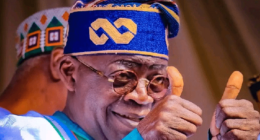 Table tennis, also known as ping pong, is one of the fastest and most exhilarating sports in the world. Though it may seem like a simple game played for fun in basements or recreation centers, at the professional level, it is a sport of incredible speed, sharp reflexes, strategic thinking, and unmatched finesse. Played on a table divided by a net, the sport demands agility, hand-eye coordination, and mental toughness. From casual play to Olympic competition, table tennis continues to grow in popularity and influence across the globe.
Table tennis, also known as ping pong, is one of the fastest and most exhilarating sports in the world. Though it may seem like a simple game played for fun in basements or recreation centers, at the professional level, it is a sport of incredible speed, sharp reflexes, strategic thinking, and unmatched finesse. Played on a table divided by a net, the sport demands agility, hand-eye coordination, and mental toughness. From casual play to Olympic competition, table tennis continues to grow in popularity and influence across the globe.
Origins and Historical Development
Table tennis traces its roots to Victorian England in the late 1800s. Initially invented as an indoor alternative to lawn tennis, it was played with makeshift equipment — books for paddles, rubber balls, and a row of books as a net. Early versions of the game were called “whiff-whaff” or “gossima,” reflecting the sound of the ball bouncing.
The name “ping pong” emerged as a trademarked term by the Parker Brothers in the United States, while “table tennis” became the standard name for the sport governed by international rules. The International Table Tennis Federation (ITTF) was established in 1926, and the first World Championships were held that same year in London. The sport’s international stature grew rapidly, especially in Asia, where it became deeply embedded in the culture of countries like China, Japan, and South Korea.
Table tennis became an Olympic sport in 1988, cementing its place as a globally respected and professionally governed discipline.
Equipment and Playing Area
The game is played on a rectangular table measuring 2.74 meters (9 feet) long, 1.525 meters (5 feet) wide, and 76 centimeters (30 inches) high. A 15.25 cm (6-inch) high net divides the table across the center.
Key equipment includes:
- Racket (Paddle or Bat): Made of laminated wood and covered with rubber on one or both sides. The type and texture of rubber can vary, influencing speed and spin.
- Ball: A lightweight, 40mm diameter ball weighing just 2.7 grams, made of plastic and designed to bounce evenly on the table.
- Table Surface: Typically dark-colored with a white border, made to ensure uniform bounce and clear visibility.
Basic Rules of Table Tennis
The objective of the game is to score points by hitting the ball over the net and into the opponent’s side of the table, such that they are unable to return it correctly.
Gameplay highlights:
- A match is usually played in a best-of-5 or best-of-7 format, with each game played to 11 points.
- Players must win by at least 2 points (e.g., 11–9, 12–10).
- After every 2 points, players switch service turns. If the score reaches 10–10, service alternates after every point.
- The ball must bounce once on each side during a serve.
- In doubles, partners must alternate hits and serve diagonally across the table.
Violations like touching the table, volleying the ball before it bounces, or improper serves result in loss of points.
Styles of Play
One of the most fascinating aspects of table tennis is the diversity of playing styles, each requiring different techniques and strategies:
- Offensive (Attackers):
- Rely on fast-paced smashes, loops, and topspin shots.
- Aim to dominate rallies with power and speed.
- Use aggressive forehand strokes and quick footwork.
- Defensive (Choppers or Blockers):
- Rely on spins and placement to force errors.
- Use heavy backspin or controlled blocks to slow the game.
- Excel in counterattacking.
- All-round Players:
- Combine offensive and defensive techniques.
- Adapt based on opponent’s style and game situation.
- Strong in rallies and tactical play.
Spin: The Heart of Table Tennis
Spin is what sets table tennis apart from many racket sports. Mastering spin is crucial for advanced play.
- Topspin: The ball spins forward, causing it to dip rapidly and bounce high.
- Backspin: The ball spins backward, causing it to float and stay low.
- Sidespin: The ball curves sideways in flight and skids on bounce.
- No spin: Deceptive and often used in combination to confuse opponents.
Players must not only learn to generate spin but also read and counter the spin from their opponents. This adds a layer of complexity and strategy to every point.
Physical and Mental Benefits
Though played on a small table, table tennis demands full-body fitness and mental sharpness. Benefits include:
- Improved reflexes: The speed of the game hones quick reactions.
- Enhanced hand-eye coordination: Essential for ball control and timing.
- Cardiovascular fitness: Fast footwork and quick rallies provide a good aerobic workout.
- Mental agility: Players must think strategically, anticipate moves, and make split-second decisions.
- Low injury risk: Table tennis is a non-contact sport, making it accessible for people of all ages and abilities.
It’s often recommended as a therapeutic sport for the elderly or people in physical rehabilitation due to its low-impact nature and mental stimulation.
Major Tournaments and Global Impact
The ITTF World Championships, held every two years, are the sport’s premier international competition, featuring singles, doubles, and team events. Other major events include:
- Olympic Games
- ITTF World Cup
- Asian Championships
- European Championships
- World Table Tennis (WTT) Series
China has dominated the global stage for decades, producing legends like Ma Long, Zhang Jike, Deng Yaping, and Wang Nan. Other top table tennis nations include Germany, Japan, South Korea, Sweden, and Brazil.
The sport also enjoys strong grassroots support and recreational participation worldwide, from schools and community centers to military bases and corporate lounges.
Technology and Modern Trends
Modern table tennis has been shaped by technological innovations:
- High-performance rackets with specialized rubbers and sponges.
- Video analysis for player development and match preparation.
- Automated robots and ball machines for training.
- Live-streaming and slow-motion replays have enhanced viewer experience.
Additionally, the World Table Tennis (WTT) initiative, launched by ITTF, aims to professionalize and market the sport more effectively, bringing new audiences into the fold.
Cultural Significance and Diplomacy
Table tennis has played a unique role in diplomacy. In 1971, “Ping-Pong Diplomacy” helped thaw relations between the United States and China during the Cold War. The exchange of players between the two countries led to a softening of political tensions and paved the way for President Richard Nixon’s historic visit to China in 1972.
This moment highlighted the power of sport as a bridge between cultures and ideologies.
Table tennis is far more than a casual game or pastime. It is a globally competitive sport that demands lightning-fast reflexes, strategic intelligence, and exceptional skill. From Olympic stadiums to neighborhood garages, table tennis remains a beloved game for millions.
Its accessibility, low cost, and universal appeal make it one of the most inclusive sports in the world. Whether you’re aiming to become a world champion or just looking for a fun and challenging way to stay active, table tennis is a sport that offers endless excitement, growth, and connection. In every flick of the wrist and spin of the ball, table tennis embodies the perfect mix of athleticism, artistry, and global unity.








